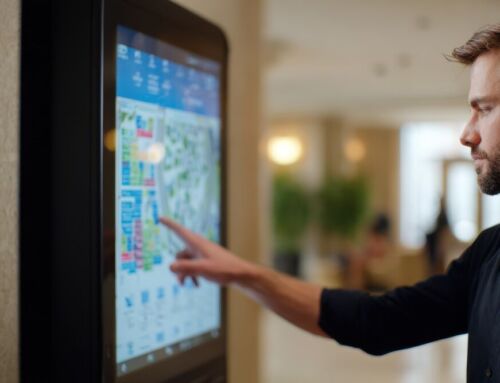Self-service ordering points changed the face of the quick-service restaurant (QSR) sector. Now we could be on the verge of another revolution. And it’s all thanks to voice-recognition AI – the kind of technology that lets you control your Alexa or Google Home devices without a screen, just by the power of your voice alone.
McDonalds, a pioneer of the first QSR kiosk wave, is again in the vanguard, rolling out voice-controlled ordering kiosks in Seoul, and having already experimented with AI-powered Drive Thru. Although not always with the desired results.
At the cutting edge of the technology, developers are experimenting with systems that can provide a personalised experience based on voice recognition, or complete payment authorisation based on the same.
So are we at the dawn of a new era of AI-powered, voice-interfaced kiosks? Is speaking what you want instead of touching and swiping the future? Well, there are some kinks to iron out, such as ensuring the AI is sophisticated enough to recognise all voice registers and accents (as McDonalds found out with its Drive Thru pilot).
And there’s no indication that anyone is looking at voice-controlled interfaces as a replacement for kiosk touchscreens, such is the versatility of the latter. But, there are some clear benefits to adding voice recognition functionality – benefits which extend well beyond the QSR sector. Here are some of the major plus points.
Even greater efficiency and convenience
Self-service kiosks have proven to be a winner precisely because they offer users a convenient and efficient option to complete whatever transaction or interaction it is they need to carry out, be it ordering a burger, paying for items in a shop or checking in for an appointment. AI voice recognition technology just ramps up those benefits. Talking to a service console to get what you want is even faster and more efficient than manipulating a touchscreen. But it’s also about giving people the choice to do things their way.
Raises the bar on accessibility
The primary reason McDonalds is rolling out voice-controlled kiosks is to improve accessibility for visually impaired customers. Carrying on the theme of providing customers with different options, offering a mix of different interfaces on the same kiosk helps to cater better to people with different needs, raising the game on inclusivity and accessibility. This is a topic we went into in more depth in this recent blog post.
Extends the self-service concept
There are situations where deploying a touchscreen-based kiosk just isn’t practical, Drive Thru takeaways being a stand-out example. But that doesn’t mean the general benefits of self-service don’t apply.
Digging into the Drive Thru example a little more, an important requirement is that ordering has to be possible from within the customer’s vehicle. That rules out touchscreens because of the issue of a person’s reach or positioning the vehicle in the right place etc. That’s why you place an order by talking to an assistant, either at a window or via a microphone.
From a resourcing perspective, it’s inconvenient to have to staff this first point in the Drive Thru purchasing process, as well as the collection point. It makes more sense for businesses if this stage could be handled by a self-service interface.
In that sense, as well as the benefits of adding new functionality to existing touchscreen-based kiosks, AI voice technology has the potential to make self-service options possible in places where a touchscreen isn’t suitable.
If you are interested in learning more about the latest developments in kiosk technology, and how they can help your business, get in touch with our friendly team of experts today.




